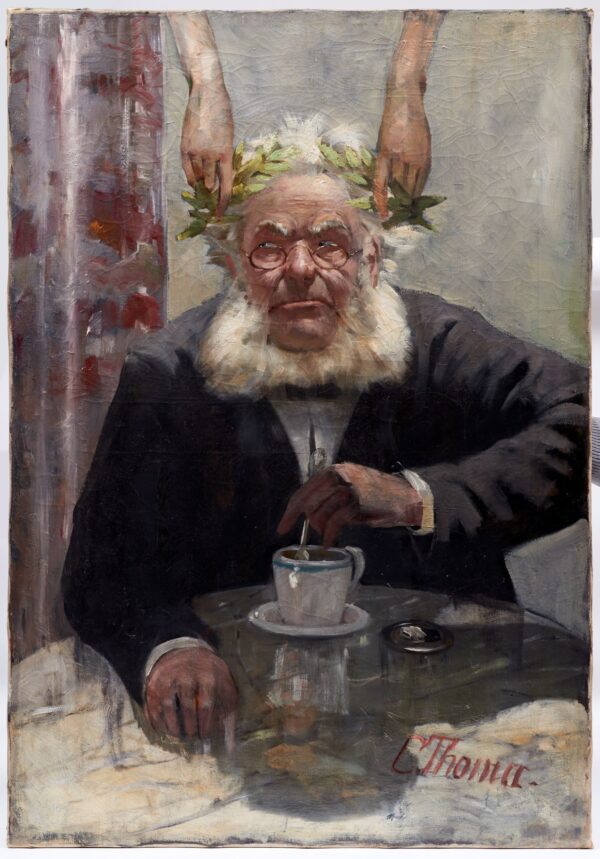The painting collection
of the German Theatre Museum
The German Theatre Museum's collection of paintings comprises around 225 objects. In contrast to the works on paper in the graphic art collection, these are paintings on textile or panel-like surfaces such as canvas, silk, wooden panels or copper plates.

Karl (Carl) Thoma-Höfele: Henrik Ibsen im Café Maximilian in München
Öl auf Leinwand, um 1888, DTM
History
Collection history
The first items in the collection of paintings - like the graphic art collection - also date back to the possessions of the court actress Clara Ziegler. After the Theatermuseum was founded in 1909, the collection of paintings was expanded primarily through donations and bequests, which included oil portraits of members of the theatre. Thanks to local theatre professionals who acted as bequeathers or donors, the growing collection of paintings in the 1930s focused primarily on personalities from the Munich and southern German theatre scene. Over the decades, the circle of people portrayed expanded to include the German-speaking world. The portrait section of the painting collection was significantly expanded through the permanent loan of objects from the portrait collection of the Bavarian State Opera in Munich and continues to grow to this day.
Motif history
However, the range of motifs in the paintings extends beyond theatre portraits - just as in the graphic art collection: the paintings approach the theatre as a genre. Interestingly, however, there are also examples of paintings here that can be assigned to stage design and scenography, i.e. that relate to the documentation of an executed decoration and the theatre play. These elaborate objects tend to fulfil representative requirements and, in contrast to motifs with a design character, must be understood and read as performance images. A high standard of stage painting, which was embedded in a tradition of academic history, landscape and architectural painting, led both in the Baroque period and at the end of the 19th century to series of paintings that declared the pictorial invention and painterly quality of concrete scenic compositions and theatre decorations to be worthy of artistic expression beyond the theatre evening. Series of objects by Marianne Kürzinger, Heinrich Döll and also Max Brückner tell of this.
Theatre architecture only rarely finds its way into the genre of painting as a motif; most likely when the ‘hustle and bustle’ of the theatre is integrated into a cityscape in a genre-like manner.